Scones
This post may contain affiliate links. Read my full disclosure policy.
Say goodbye to dry, crumbly scones—a secret ingredient makes these light, tender and buttery!
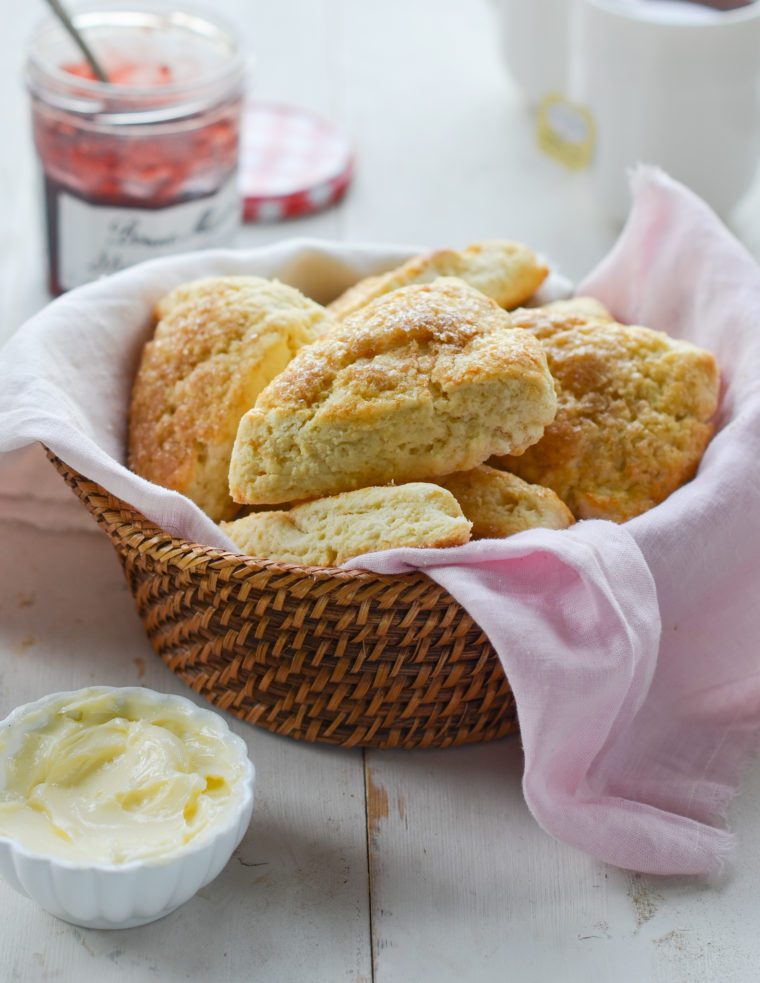
Similar to American biscuits, scones are a British teatime staple, often enjoyed with butter, jam, or clotted cream. They’re a favorite in American bakeries too, where they are often sweeter and dressed up with various mix-ins and frostings. However, all too often, instead of a buttery, flaky treat, scones are dry, leaving us with a lap full of crumbs and searching for the nearest cup of coffee! If that’s been your experience, I promise these light, tender, buttery scones will change your mind!
The secret is using cake flour instead of all-purpose flour. It’s lower in protein and makes for ultra-tender scones. If you don’t have any on hand, you can easily make your own using all-purpose flour and cornstarch (see the FAQs below). For a kid-friendly twist, don’t miss my chocolate chip scones.
Table of Contents
“After living in the U.K. for 5 years and enjoying their high tea I’ve been on the lookout for the perfect scone recipe…this is it!!”
What You’ll Need To Make Scones
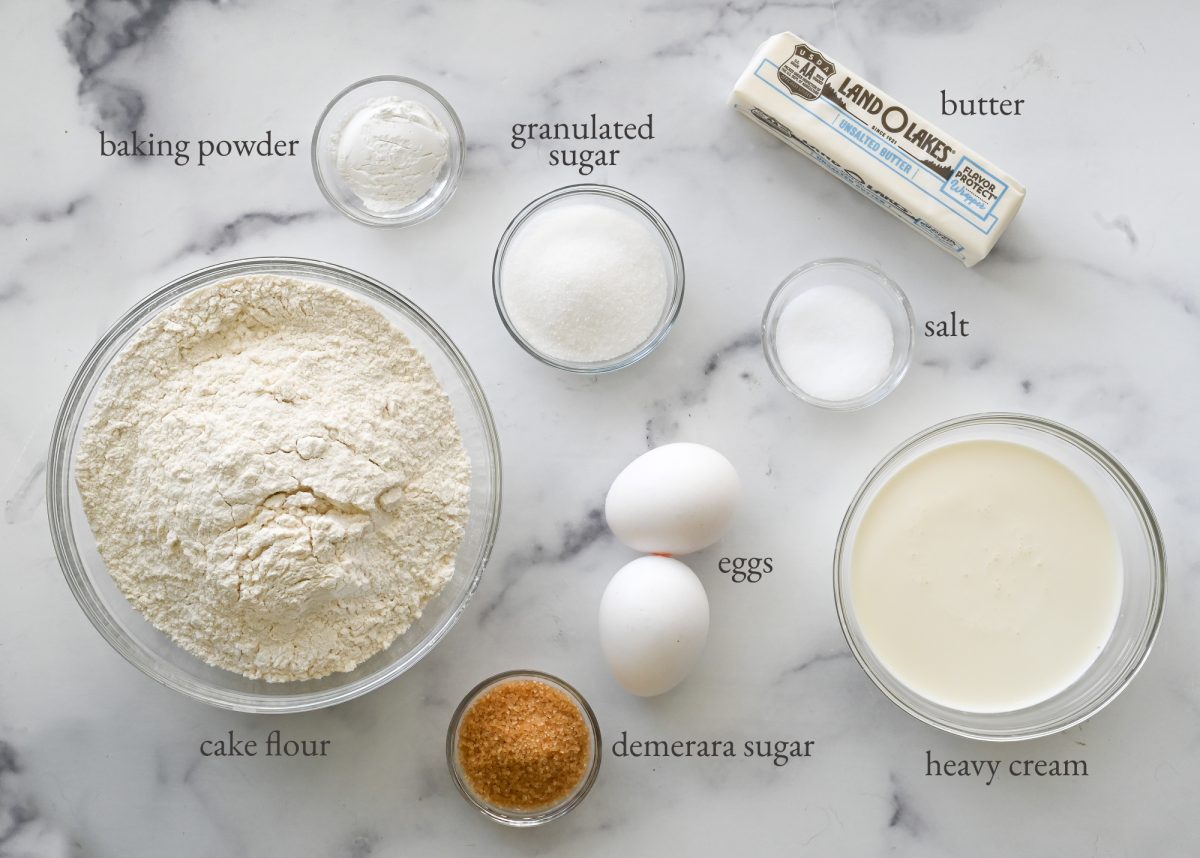
- Cake Flour: The base of the scones. Cake flour provides a softer, more delicate texture than all-purpose flour. Don’t have cake flour on hand? See the FAQs to see how to make your own cake flour using all-purpose flour and cornstarch.
- Baking Powder: Acts as a leavening agent, helping the scones rise and become light and fluffy.
- Sugar: Adds sweetness and enhances the flavor of the scones.
- Butter: Adds richness, flavor, and a tender crumb to the scones.
- Eggs: Provides structure to the dough and helps bind the ingredients together. Egg brushed on top of the dough gives the finished scones a beautiful golden color.
- Heavy Cream: Adds moisture, richness, and a creamy texture to the scones. Do not substitute light cream or milk.
- Demerara Sugar: (Also called raw or turbinado sugar) Adds a crunchy texture and caramelized sweetness to the scone tops, providing a delightful contrast to the tender interior.
- Jump to the printable recipe for precise measurements
Step-By-Step Instructions
Preheat the oven to 425°F and set an oven rack in the middle position. Line a baking sheet with parchment paper. In a large bowl, whisk together 2 cups cake flour, 2½ teaspoons baking powder, 2½ tablespoons granulated sugar, and a scant ¾ teaspoon salt.
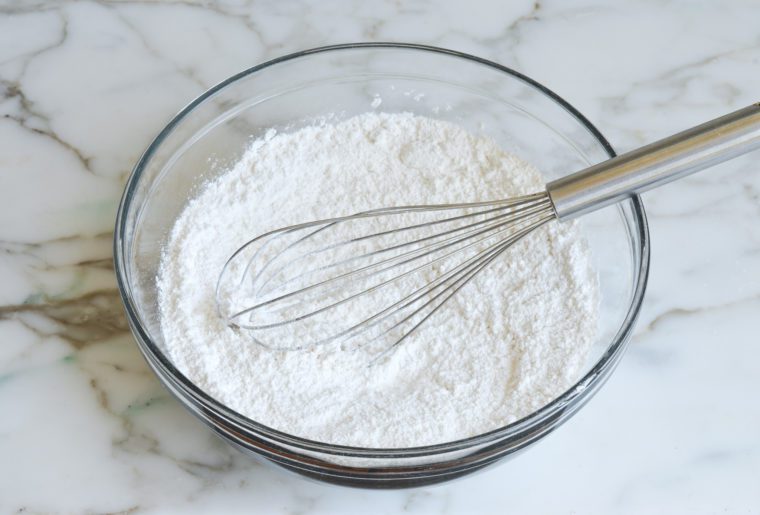
Add the cold butter, and cut into small pieces.
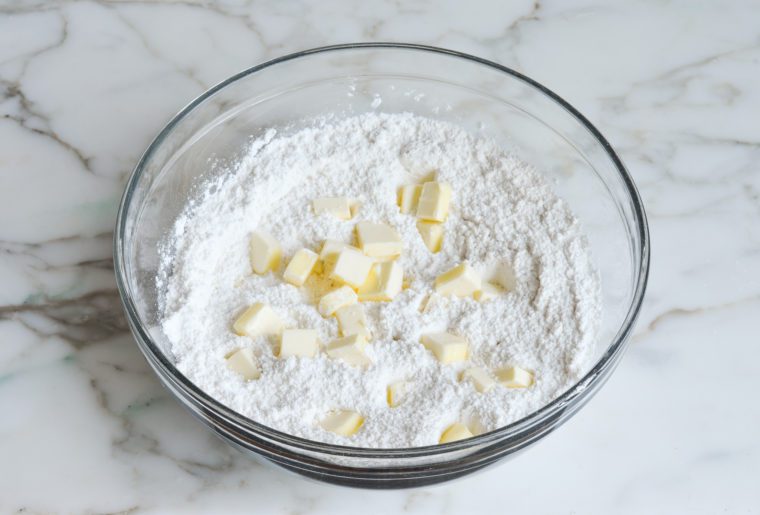
Use your fingertips to rub the butter into the dry ingredients until the mixture resembles coarse crumbs with pea-size clumps of butter within.
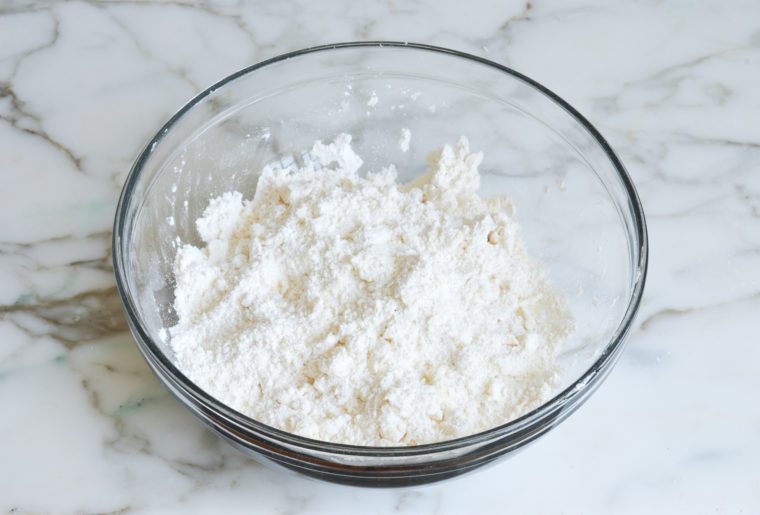
In a small bowl or liquid measuring cup, whisk together ⅔ cup heavy cream and 1 egg.
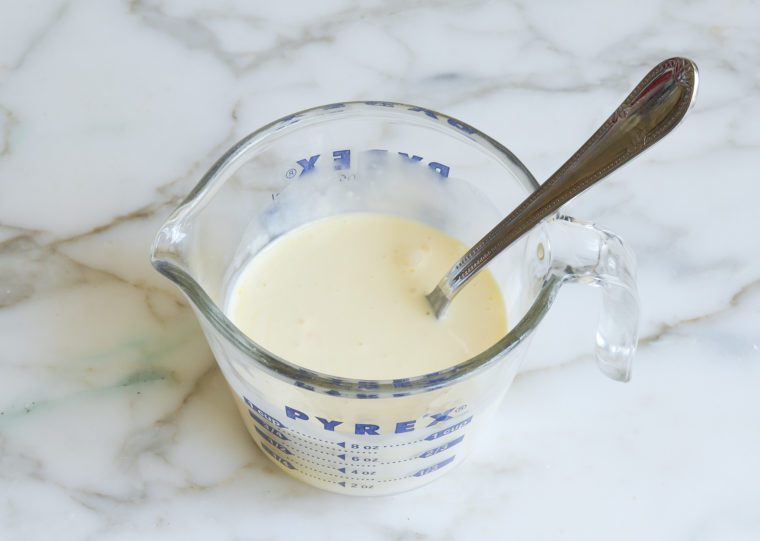
Make a well in center of dry ingredients, then pour the cream/egg mixture in.
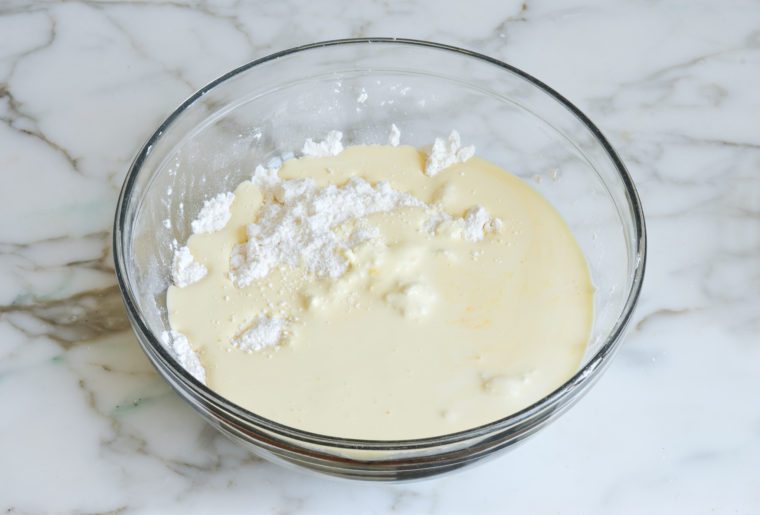
Use a rubber spatula to mix until the dough comes together into a mass. It should be a bit sticky but not so wet that you can’t handle it with your hands. If it seems dry, add the remaining 2 tablespoons of cream.
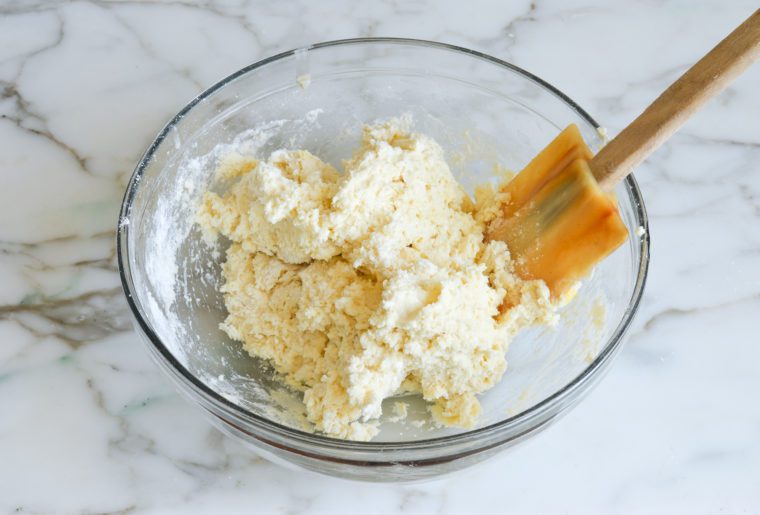
Dust a work surface lightly with flour, then dump the scone dough onto the surface.
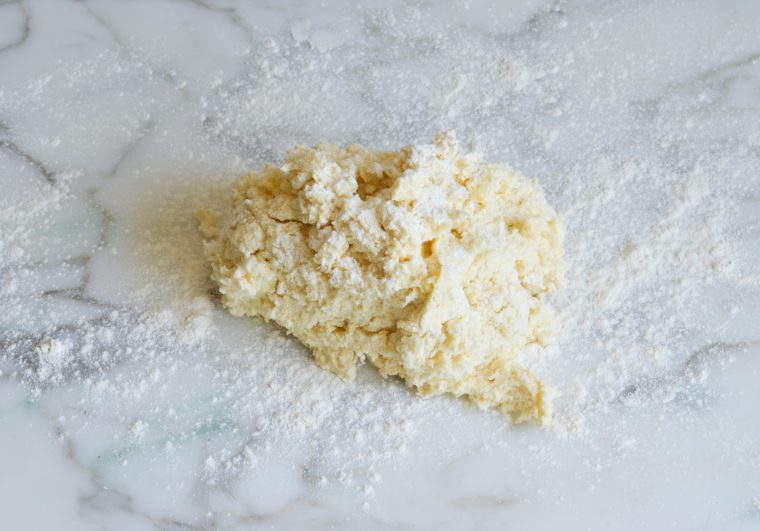
Knead very gently a few times until dough comes together into a ball. (Sprinkle more flour, little by little, if dough is too sticky to work with.) Press dough into a flat circle about 7 inches in diameter and ¾-inch thick.
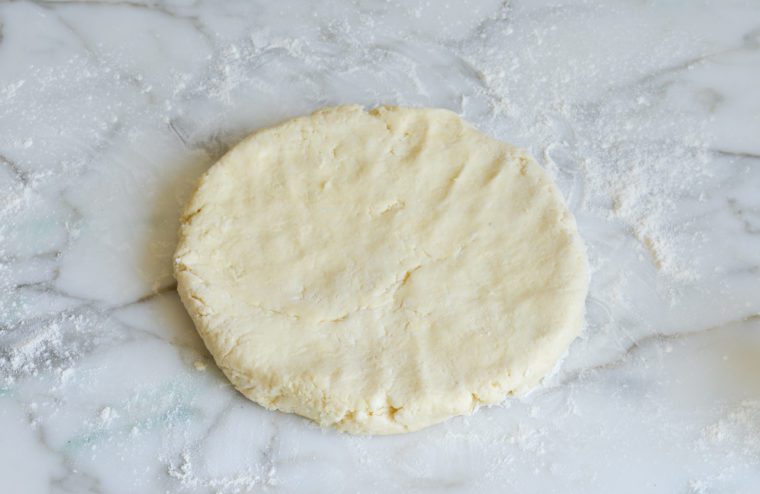
Use a sharp knife to cut into 8 triangles.
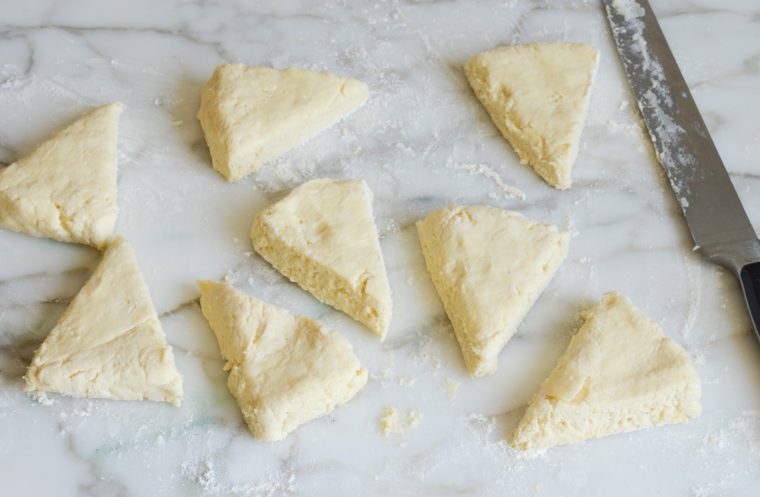
Transfer the wedges to the prepared baking sheet. Brush lightly with a beaten egg and sprinkle with about 1 tablespoon demerara sugar.
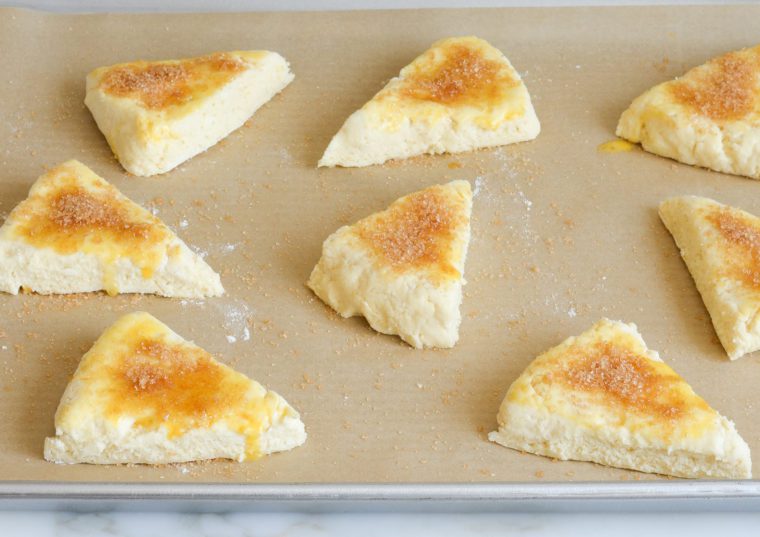
Bake for 10 to 12 minutes, until the tops are lightly golden and firm to the touch.
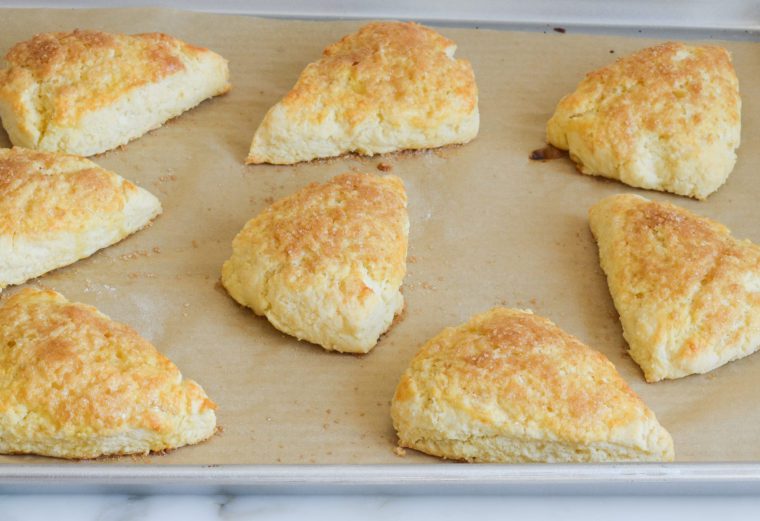
Serve warm from the oven.
Frequently Asked Questions
Cake flour is finer and lower in protein, which makes lighter and fluffier scones. If you don’t have any on hand, a simple blend of all-purpose flour and a bit of cornstarch makes a great substitute. Simply whisk together 1¾ cups all-purpose flour and ¼ cup cornstarch. This easy swap will take your scones from just okay to fantastic, giving them that perfectly tender, fluffy, ultra-buttery crumb. If you’d like some other options for using up cake flour, take your pick from cherry cornmeal upside-down cake to yellow cake with chocolate buttercream frosting to Boston cream pie.
Definitely! To freeze them before baking, place the raw scones on a baking sheet, let set in the freezer, then place in an airtight container and freeze for up to 3 months. Bake as needed directly from the freezer. (Wait until you’re ready to bake the scones to brush on the egg wash, and allow 1 to 2 minutes longer in the oven.) To freeze after baking, let the scones cool completely and store in an airtight container for up to 3 months. Before serving, remove the scones from the container and let them come to room temperature. (If you have the option to freeze the scones before or after baking them, you will get the best results if you freeze before baking.)
Demerara (also called raw or turbinado) sugar is a type of cane sugar with large, crunchy crystals and a slightly amber color. It has a natural caramel-like flavor and is often used to add texture and sweetness to the tops or exterior of baked goods like pecan shortbread cookies and butterscotch pecan scones. If you don’t have it on hand, you can substitute light or dark brown sugar, or simply omit it.

Video Tutorial
You May Also Like
Scones
Say goodbye to dry, crumbly scones—a secret ingredient makes these light, tender and buttery!
Ingredients
For The Dough
- 2 cups cake flour, spooned into measuring cup and leveled off (see note on substitution)
- 2½ teaspoons baking powder
- 2½ tablespoons sugar
- Scant ¾ teaspoon salt
- 1 stick (½ cup) cold unsalted butter, cut into ½-inch pieces
- 1 large egg
- ⅔ cup heavy cream (do not substitute milk or light cream), plus more if needed
For The Topping
- 1 large egg, beaten
- 1 tablespoon demerara sugar (also called raw sugar or turbinado; optional)
Instructions
- Preheat the oven to 425°F and set an oven rack in the middle position. Line a baking sheet with parchment paper.
- In a large bowl, whisk together the flour, salt, baking powder and granulated sugar. Add the pieces of cold butter. Using your fingertips, rub the butter into the dry ingredients until the mixture resembles coarse crumbs with pea-size clumps of butter within.
- In a small bowl or liquid measuring cup, whisk together the heavy cream and the egg. Make a well in center of dry ingredients, then pour the cream/egg mixture in. Using a rubber spatula, mix until the dough comes together into a mass. It should be a bit sticky but not so wet that you can't handle it with your hands. If it seems dry, add 1 to 2 tablespoons more cream.
- Dust a work surface lightly with flour, then dump the scone dough onto the surface; dust the dough with a bit of flour as well. Knead very gently a few times until the dough comes together into a ball. (Sprinkle more flour, little by little, if dough is too sticky to work with.) Press the dough into a flat circle about 7 inches in diameter and ¾-inch thick, then use a sharp knife to cut into 8 even triangles. Transfer the wedges to the prepared baking sheet. Brush lightly with the beaten egg and sprinkle with the demerara sugar, if using. Bake for 11 to 13 minutes, until the tops are lightly golden and firm to the touch. Serve warm from the oven.
- Note: If you don't have cake flour, you can make your own: simply whisk together 1¾ cups all-purpose flour and ¼ cup cornstarch.
- Freezer-Friendly Instructions: To freeze before baking, place the raw scones on a baking sheet, let set in the freezer, then place in an airtight container and freeze for up to 3 months. Bake as needed directly from the freezer. (Allow 1 to 2 minutes longer in the oven.) To freeze after baking, let the scones cool completely and store in an airtight container for up to 3 months. Before serving, remove the scones from the container and let them come to room temperature. (If you have the option to freeze the scones before or after baking them, you will get the best results if you freeze before baking.)
Nutrition Information
Powered by ![]()
- Per serving (8 servings)
- Serving size: 1 scone
- Calories: 322
- Fat: 20 g
- Saturated fat: 12 g
- Carbohydrates: 33 g
- Sugar: 6 g
- Fiber: 1 g
- Protein: 4 g
- Sodium: 188 mg
- Cholesterol: 76 mg
This website is written and produced for informational purposes only. I am not a certified nutritionist and the nutritional data on this site has not been evaluated or approved by a nutritionist or the Food and Drug Administration. Nutritional information is offered as a courtesy and should not be construed as a guarantee. The data is calculated through an online nutritional calculator, Edamam.com. Although I do my best to provide accurate nutritional information, these figures should be considered estimates only. Varying factors such as product types or brands purchased, natural fluctuations in fresh produce, and the way ingredients are processed change the effective nutritional information in any given recipe. Furthermore, different online calculators provide different results depending on their own nutrition fact sources and algorithms. To obtain the most accurate nutritional information in a given recipe, you should calculate the nutritional information with the actual ingredients used in your recipe, using your preferred nutrition calculator.

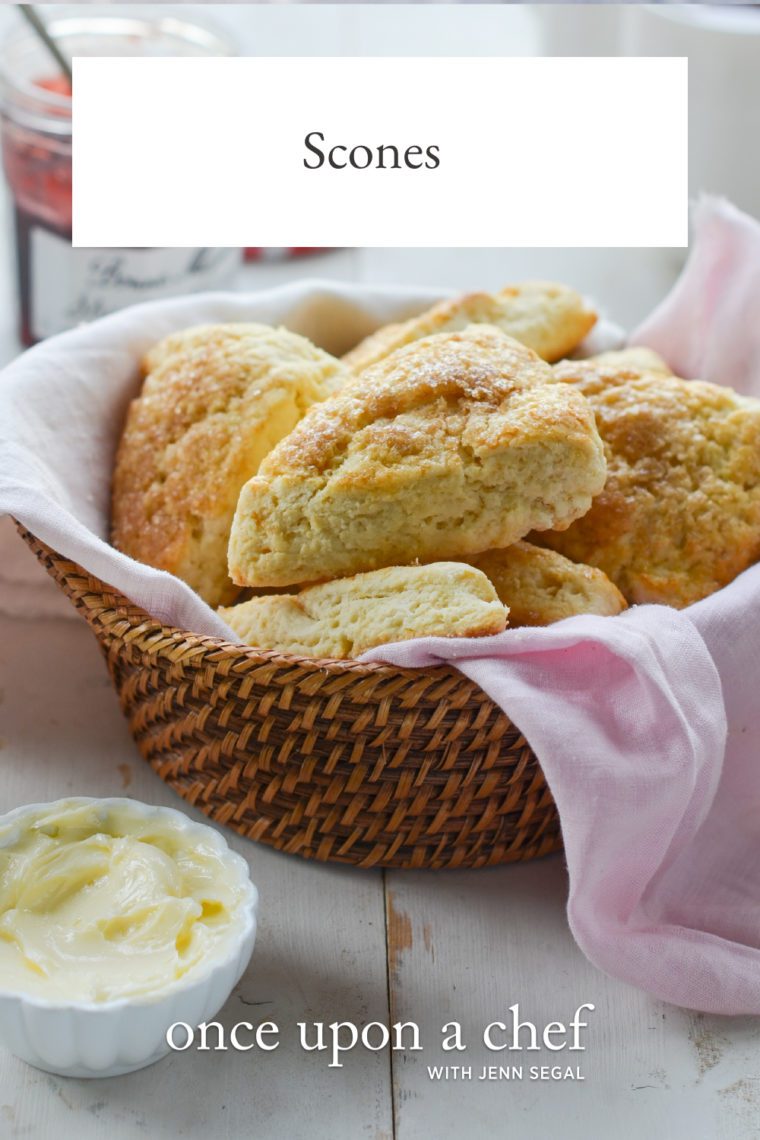
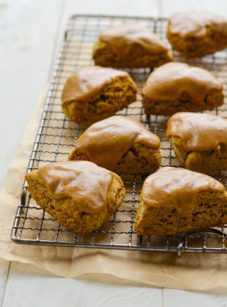
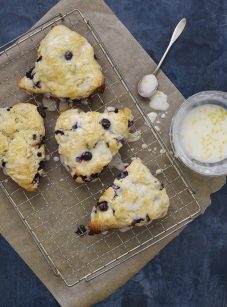
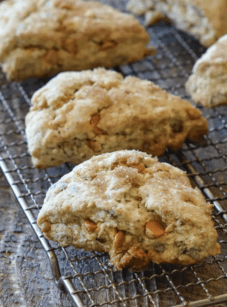
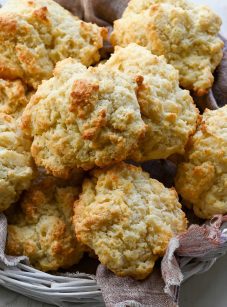
I made these this morning. Easy. Light. I liked them. But there was a bitter under-taste that was perhaps the baking powder? Another person mentioned this. Yes, I used the specified amount and didn’t get confused with tea and tablespoons. Next time, I’ll use a different brand and cut back a little.
Hi Linda, You might try an aluminum-free baking powder like Rumford.
Hi Jenn, wanted to know if I could add Zante currants or cranberries and how much would I use. Thanks in advance.
Sure, Arlene, that’s fine. I’d suggest about 1/2 cup. Please LMK how they turn out!
Hello Jenn
I have deliberately stayed away from making scones because my friend makes delicious fluffy ones and I tried many years ago to make them and failed. Now I am encouraged to try your recipe. I am gluten sensitive. Can the flour be gluten free such as Bob Red Mill All purpose Gluten Free flour or BRM Baking and Pastry flour? I am asking since you mention that some of the success of this recipe is the creation of less gluten. I also have used Molly B Gluten free flour which is only available here in Toronto Canada and I do like it better for making those special occasion cakes.
Hi Donna, I haven’t made these with gluten-free flour, so I can’t say for sure. (Oftentimes, readers will comment that they’ve adapted my baked goods to be gluten-free, but I don’t see any comments mentioning that here, so you’d be the “guinea pig.”) Please LMK how they turn out if you try it!
Hi! Could you add cinnamon into the recipe for cinnamon scones? A teaspoon or two? Would you have to alter the other ingredients? Thank you! Can’t wait to try these?
Hi Joani, sure I think you could add cinnamon to this. I’d recommend starting with 1/2 teaspoon. I’d love to hear how they turn out!
Genius! Cake flour! I love it. I cannot wait to try these and your other versions. I use cake flour in my favorite pound cake recipe (along with a trio of extract-vanilla, lemon and almond) It is always a big hit. Now I more recipes to use cake flour! Yeah!
Thank you once again.
How I would make these Lemon Scones or is that not possible?
Hi Dorthea, Sure – I’d add a teaspoon of lemon zest to the batter. These would also be nice with a lemon glaze on top. I have a scone recipe with a lemon glaze in my first cookbook. If you don’t own the book, email me at jennifer@onceuponachef.com and I’ll share the recipe with you. 🙂
Hi Jenn!
I love scones! Can I add blueberries or raspberries to your recipe? If so, do I change the other ingredients in any way? Thanks so much.
Hi Doreen, I wouldn’t recommend that as the berries will add liquid to the scones and throw off the wet/dry ratios. If you have my first cookbook, I have a recipe for blueberry scones on page 189. If you don’t have the book, but would like the recipe, email me at jennifer@onceuponachef and I’d be happy to send it to you!
Hi Jenn, I use this recipe all the time. It’s the best scones recipe. Thanks for sharing. Gladys.
Hi Jen, They sound wonderful and I am going to try them. One trick I’ve been using for a while is to freeze the butter and grate the frozen butter into the dough. When the butter melts in the oven it creates delicious little flakey pockets. The idea came from another recipe that also suggests putting some rough salt on too before baking. Love your recipes, they are all so good! Alex
I have made many scones over my 82years for entertaining friends for an English cream tea but this recipe is definitely the best. So light and fluffy – perfect. I did omit the sugar because as you may know Brits tend not to sweeten things as much as their North American counterparts and when you slather on the raspberry or apricot jam and cream, no additional sweetening is necessary. The recipe (as so many of your recipes) is a keeper.
Thank you Jenn.
Hands down, the best scones and I have made many. Most recipes call for buttermilk but I had heavy cream that was on the verge of turning so I used that. Light fluffy and melt in your mouth good. The house smelled incredible while these were baking and these scones were a huge hit.
Can I make these without a food processor ?
Hi Annie, you can cut the butter into the flour mixture with two knives or rub it in with your fingers – it will just take a while. Hope you enjoy!
Can I make the scones with almond flour? Would I need make any changes?
Hi Rani, I wouldn’t recommend almond flour here — I’m sorry!